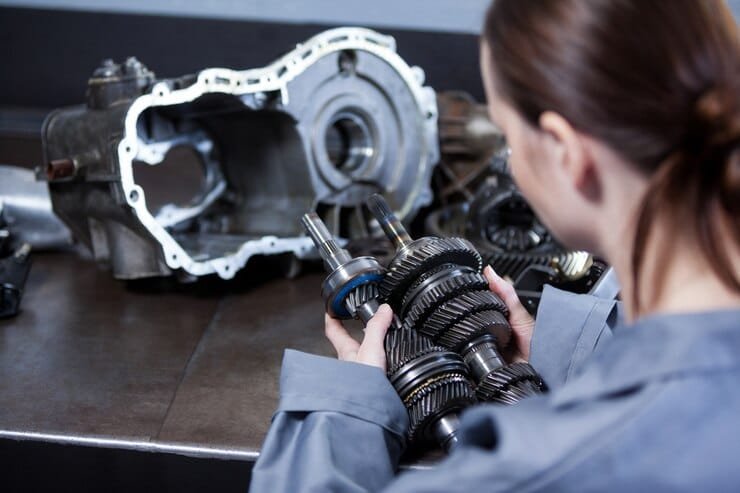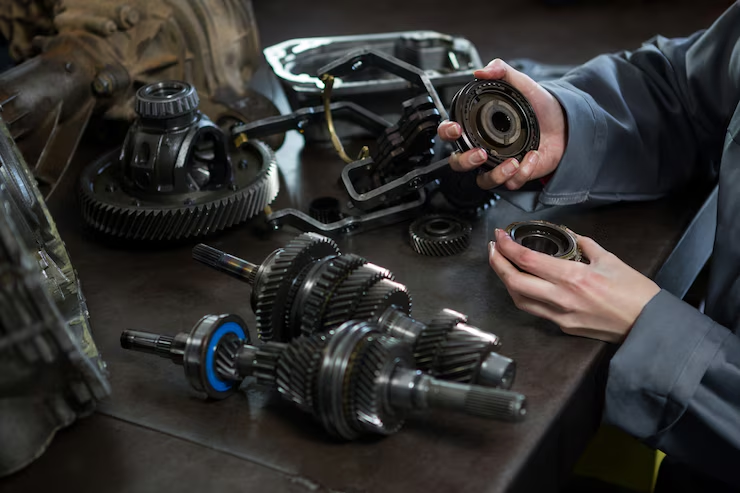The air hung thick with the scent of machining oil and anticipation – a familiar perfume in the hallowed halls of automotive manufacturing. For years, we’ve marched to the rhythm of the internal combustion engine, a symphony of precisely engineered parts humming in perfect harmony. But lately, a discordant note has crept in. A tremor, barely perceptible at first, now escalating into a full-blown earthquake. It started with a whisper – a supplier’s delayed shipment, a quality control issue, a subtle shift in material specifications. Now, it’s a roar.
“We’re seeing unprecedented disruptions,” confided Amelia Hernandez, head of procurement at Dynatron Motors, during a recent industry conference. Her voice, usually brimming with confidence, held a palpable strain. The conversation was punctuated by hushed anxieties and nervous glances – the unspoken fear echoing in the cavernous space. It’s not just about a single faulty part; it’s about the fragility of the entire system.
This isn’t some abstract economic downturn; this is about the very heart of the automotive industry – the engine block. A seemingly simple casting, yet its failure ripples through the entire supply chain, causing production halts, impacting deliveries, and eroding consumer trust. The engine block, that bedrock of power and reliability, has become the unexpected villain in this unfolding drama. We’re witnessing a crisis that threatens not just profits, but the very future of the automotive landscape. This blog post will dissect the problem, explore its impact, and offer pathways forward, revealing how one seemingly small part holds the key to navigating this turbulent period and shaping the next chapter of automotive innovation. Prepare to delve into the heart of the matter – where the rubber meets the road, and the engine block meets its breaking point.
The engine parts market, a behemoth of gears, pistons, and finely-tuned components, is undergoing a dramatic transformation. It’s a thrilling, sometimes terrifying, rollercoaster ride for businesses, with opportunities for those who can navigate the twists and turns. Let’s buckle up and explore the landscape.

Positive Trends – The Engine of Growth:
- The Rise of the Electric Vehicle (EV) – A Double-Edged Sword: While seemingly detrimental at first glance, the EV revolution presents a fascinating opportunity. The transition isn’t a simple on/off switch. Hybrid vehicles, requiring sophisticated powertrain components, represent a bridge, necessitating intricate engine parts. Companies like Bosch, already a major player in traditional combustion engine parts, are aggressively investing in EV powertrain technology, showcasing strategic adaptation. This requires embracing the change, not resisting it.
- Additive Manufacturing – Precision Redefined: 3D printing is revolutionizing the creation of intricate engine components. Imagine creating custom-designed parts on demand, reducing lead times, and minimizing material waste. Companies like EOS are leading this charge, offering solutions for faster prototyping and the production of highly customized, lightweight parts. This trend allows for greater efficiency, reduced costs, and unparalleled design flexibility – a dream for engineers.
- Data-Driven Predictive Maintenance – The Oracle of Engines: Sensors embedded in engines are generating vast amounts of data, predicting potential failures before they occur. This shift towards proactive maintenance is a game-changer. Companies like Caterpillar are utilizing this data to optimize maintenance schedules, reducing downtime and enhancing operational efficiency. It’s like having an oracle whispering the future of your engine’s health.
Adverse Trends – The Potholes on the Road:
- Supply Chain Volatility – The Rollercoaster of Uncertainty: The pandemic exposed the fragility of global supply chains. Raw material shortages and logistical disruptions can cripple even the most robust businesses. This necessitates diversification of suppliers, building resilient supply chains, and investing in regionalization. Ignoring this is like driving blindfolded.
- Increased Regulatory Scrutiny – The Tightening Grip: Stringent emission regulations are constantly evolving, demanding innovation and significant investment in compliance. Failing to meet these standards can lead to hefty fines and reputational damage. The automotive industry needs to embrace a future where sustainability is not a luxury, but a mandate.
- The Skills Gap – The Missing Technicians: Finding and retaining skilled technicians is an ever-growing challenge. The industry needs to invest heavily in training programs and attract the next generation of engineers and mechanics. This challenge requires a collective effort from industry and educational institutions.
Actionable Insights – Navigating the Path Ahead:
- Embrace Diversification: Don’t put all your eggs in one basket. Invest in both traditional combustion engine parts and the emerging technologies in the EV and hybrid sectors.
- Invest in R&D: Innovation is key. Pour resources into developing advanced materials, leveraging additive manufacturing, and exploring predictive maintenance technologies.
- Strengthen Supply Chains: Build robust, diversified supply chains, potentially through regionalization and closer partnerships with suppliers.
- Focus on Sustainability: Meeting and exceeding increasingly stringent environmental regulations is crucial for long-term survival.
The engine parts market is a dynamic landscape. By embracing the positive trends and mitigating the adverse ones, businesses can navigate this exciting journey and unlock immense potential. The future is unwritten, but with strategic planning and bold action, the rewards can be enormous.
The whirring of the assembly line at AutoTech Motors was a symphony of controlled chaos. Mark, the lead engineer, felt the familiar thrumming in his chest – the heartbeat of a perfectly tuned engine. Their new high-performance engine, the “Phoenix,” relied heavily on a revolutionary lightweight crankshaft forged from a titanium alloy. This wasn’t just a part; it was the backbone of the Phoenix, promising increased fuel efficiency and a screaming top-end. The initial skepticism from the board, voiced through the gravelly tones of CFO, Mr. Harding (“Titanium? The cost!”), melted away as test results surpassed expectations. The Phoenix, with its meticulously crafted engine parts, became the jewel in AutoTech’s crown, boosting sales and solidifying their market position.
Over in MedTech Innovations, the quiet hum of a different kind of engine was pivotal. This wasn’t about horsepower, but about life itself. Dr. Anya Sharma, a biomedical engineer, stared intently at a microscopic image of a miniature pump—a vital component in a new generation of implantable cardiac assist devices. The precision engineering of these minuscule engine parts, far smaller than a fingernail, was a testament to human ingenuity. Anya recalled the frustrating setbacks during development, the countless revisions, and the late nights fueled by caffeine and sheer determination. The triumphant moment, however, was unforgettable—seeing the first successful in-vivo test, the tiny pump diligently mimicking the rhythm of a healthy heart.
Meanwhile, at Precision Manufacturing Inc., the air was thick with the scent of metal and oil. The challenge was different here: producing thousands of identical engine components for a heavy-duty construction machinery client. Efficiency was king. Sarah, the operations manager, had spearheaded the implementation of a new automated assembly line, dramatically reducing production time and defects. The smooth, rhythmic clang of robotic arms working in perfect synchronicity was a powerful symbol of this progress. Sarah, a stickler for detail, had overseen the meticulous quality control checks, ensuring every single piston, every single connecting rod, met the strictest standards – the sound of a well-oiled machine indeed. The improved output led to a lucrative contract renewal and a healthy boost in company morale.
“We need to lean into digitalization, aggressively,” declared Sarah Chen, CEO of Apex Engine Components, during their Q2 meeting. Since early 2023, Apex has heavily invested in advanced simulation and AI-driven predictive maintenance software. This allows them to offer clients not just parts, but also proactive service agreements predicting potential failures and optimizing engine performance – a move that’s proven highly lucrative, securing several large contracts with fleet operators.
Meanwhile, across town at rival company, Dynatronics, the strategy was different. “Acquisition is key,” boasted Mark Olsen, their head of strategy, “We’re not just building; we’re buying our way to the future.” Dynatronics launched a significant acquisition spree in 2023, snapping up smaller, specialized firms producing niche engine components for electric vehicles – a strategic gamble given the growing EV market. This diversified their portfolio and rapidly expanded their technological reach, though integrating these diverse entities proved to be a challenge.
“The supply chain is the new battlefield,” commented David Lee, head of operations at Global Engine Solutions, in an industry conference. Responding to continued supply chain instability, Global Engine Solutions has focused intensely on strengthening relationships with key material suppliers. They negotiated long-term contracts with guaranteed supply, reducing dependence on volatile spot markets and improving their cost predictability. This strategy also included investing in vertical integration, taking greater control over certain crucial manufacturing processes.
But the story isn’t solely about technology or acquisitions. Precision Parts, a smaller but innovative player, successfully leveraged a different approach. They shifted to a highly flexible, modular manufacturing system since 2023. This allows them to rapidly adapt to changing customer needs and easily incorporate new materials or designs, providing them with a competitive edge in a fast-paced market. Their nimble approach has allowed them to win contracts that larger, less adaptable competitors couldn’t handle. The future, it seems, will favor companies that can navigate both technological advancement and supply chain complexities with innovative agility.

Outlook & Summary: The Engine’s Heartbeat, the Industry’s Pulse
The engine block – a seemingly simple casting – is the very bedrock of the automotive world. This article peeled back the layers of its influence, revealing how a single component’s disruption can send tremors throughout the entire automotive parts manufacturing ecosystem. We journeyed through the anxieties, innovations, and strategic shifts sparked by recent supply chain bottlenecks, material shortages, and the relentless march of electrification. Remember the gut-wrenching feeling of seeing production lines grind to a halt? That’s the raw, visceral impact we explored.
Looking ahead 5-10 years, the engine parts space won’t just be about internal combustion anymore. The transition to electric vehicles (EVs) presents a seismic shift, but it also opens doors. We’re seeing a fascinating duality: the decline of some traditional components, alongside the explosive growth of new technologies in battery systems, power electronics, and thermal management – all demanding precision engineering and advanced materials. Think less about pistons and more about sophisticated heat sinks and intricate power inverters. This isn’t just a change in parts; it’s a metamorphosis of the entire manufacturing landscape.
The automotive parts sector as a whole will need to embrace agility and adaptability like never before. We’re moving from a predictable, albeit cyclical, market to one that’s rapidly evolving, demanding entirely new skillsets and collaborative approaches. We talked about the challenges – the need for massive investment in R&D, the retraining of workforces, and the strategic partnerships that will be crucial for survival. But within these challenges lies immense opportunity; the chance to redefine what it means to be an automotive parts manufacturer.
The key takeaway? The engine block’s crisis highlights the interconnectedness of the automotive world. The ripple effect of one component’s instability underscores the importance of proactive, holistic strategies for the entire sector. We need to anticipate, innovate, and collaborate to navigate this transformative decade.
So, I ask you, are you ready to rewrite the future of automotive parts manufacturing?






One Response
good one!